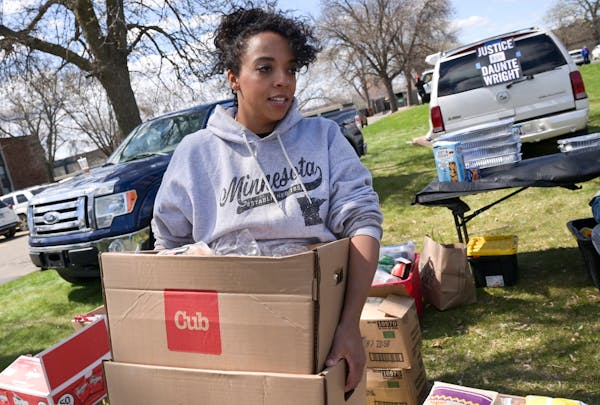Health care workers Saturday staged a protest in front of the Brooklyn Center Police Department over the use of so-called less-lethal riot-control weapons following a week of clashes between police and civilians.
Protests over former officer Kim Potter's killing of 20-year-old Daunte Wright have featured nonviolent marches and demonstrations but also brick-throwing and fireworks. Police have responded with flash-bang grenades, rubber-coated bullets, tear gas and mass arrests.
Some of those people struck by police projectiles, including a Star Tribune photojournalist, have needed emergency medical care.
Victor Ramirez, a 19-year-old who protested multiple nights, was shot Tuesday with a projectile that narrowly missed his left eye and fractured a bone.
"These weapons are being used on people that don't have no weapons in their hands," Ramirez said. He said he's tired of police "saying that they're scared when they have full body armor, when they're the ones with these guns."
In February, University of Minnesota medical student Erika Kaske published a study in the New England Journal of Medicine analyzing projectile injuries stemming from civil unrest over the death of George Floyd.
A review of records from Hennepin Healthcare and M Health Fairview found 89 emergency room visits, including seven people hit directly by tear gas canisters, 10 people struck in the eye and three blinded. In 40% of emergency room visits, the patient had been struck in the head, contrary to U.N. guidance on such projectiles.
Kaske said the study was motivated by a teenage patient under 18 who was shot and suffered a skull fracture with bone fragments affecting the brain, forcing urgent neurosurgery.
"As scientists, we believe in evidence-based practice. Science must inform our policy decisions, whether we are talking about COVID, or whether we are talking about policing," said Dr. Brooke Cunningham, a family physician and community health professor.
The Brooklyn Center City Council passed a resolution last week banning rubber-coated bullets and tear gas. The Minneapolis City Council issued its own nonbinding resolution.
Neurosurgeon Dr. David Darrow said it wasn't his place to recommend alternative police tactics, but to show that projectiles are inaccurate and sometimes improperly used.
"I'm not a police officer. I'm a surgeon and a physician and a scientist," he said.
Susan Du • 612-673-4028

Want to share info with the Star Tribune? How to do it securely

'Safe recovery sites' would offer syringes, naloxone and more to people using drugs. The plan could be in peril.
New Minnesota GOP leaders seek peace with party's anti-establishment wing

Who is Republican Lisa Demuth, Minnesota's first House speaker of color?

